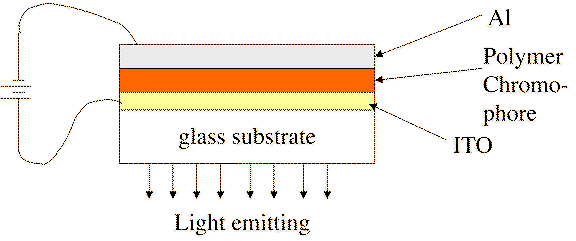
I. Introduction
Color sells textiles. Traditionally, the industry has been concerned not only with color hue and intensity, but also with maintaining the color regardless of environmental influences. Yet there are numerous exciting and important markets which require materials which alter their color on demand. Chameleon fibers will allow for the creation of value-added products in traditional industry markets, as well as entry into entirely new areas. It is the objective of this project to provide the textile and fiber industry with a series of new "smart" materials that can quickly change their color, hue, depth of shade, or optical transparency by the application of an electrical or magnetic field.
What are they good for?
Chameleon Fibers could find use in: Carpets, Draperies, Wall Hangings, Camouflage and even T-Shirts
These applications require: Robust physical properties, Oxygen resistance/ cycling stability, Slow response times, Moderate resolution, but expecially Low cost
Chameleon Fibers could also find use in: Billboards and signs, Smart uniforms/ protective gear, Athletic equipment, others
These applications require: Moderate physical properties, Oxygen resistance/ cycling stability, Fast response times, High resolution, Moderate cost
Chameleon fibers will have different requirements depending upon the application, but physical and environmental stability are just as important as the color change itself!
What methods are available for making molecules changing color?
1) pH Changes: Molecules can change color dramatically in the presence of acids and bases, but these reagents and the solvent required to transport them make this method extremely difficult to implement in the applications suggested above.
2) Oxidation State Changes: This method is also highly effective, but it requires the migration of ions. The response time can be fast in solvents, but this complicates the device. Gel-type devices might also be possible, though physical robustness, oxygen stability and response times represent serious engineering challenges. A device built on this principle would be similar to a polymer LED. We are preparing new chromophores of this type.

3) Bond breaking/making: There are a number of systems that undergo reversible bond-breaking, bond forming processes that result in dramatic color changes. Most commonly, these are light initiated processes. Such systems are under investigation for information storage applications. We are not investigating these systems at this time, because of stability concerns and because photobleaching of color is expected to be a problem in the applications outlined above.
4) Mechanochromism: Certain compounds have been shown to undergo color changes as a result of applied stress. We are constructing a mechanochromic system by surface modification of conducting polymers.
5) Electric or magnetic field effects: Some highly polaraizable systems have been observed to change color in the presence of electric or magnetic fields. We are actively investigating this phenomena.
Current research activities in the Chameleon Fiber Project inculde:
Polymer Synthesis--Chromophore Synthesis--Polymer Processing--Surface Chemistry--Analytical Developments